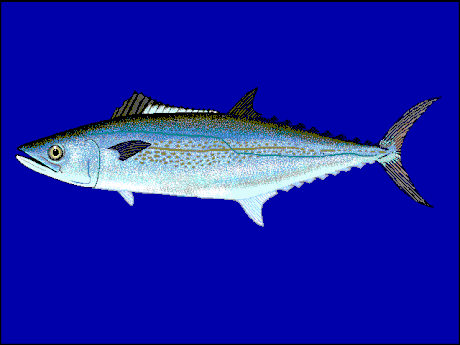The cero (Scomberomorus regalis), also known as the pintado,[citation needed] kingfish,[4] cero mackerel, cerite or painted mackerel, is a ray-finned bony fish in the family Scombridae, better known as the mackerel family. More specifically, this fish is a member of the tribe Scomberomorini, the Spanish mackerels, and is the type species of the genus Scomberomorus. It is similar in appearance and coloration to the Atlantic Spanish mackerel, Scomberomorus maculatus, except the cero has a longitudinal stripe in addition to the spots of the Atlantic Spanish mackerel.
| Cero | |
|---|---|
 | |
| Scientific classification | |
| Domain: | Eukaryota |
| Kingdom: | Animalia |
| Phylum: | Chordata |
| Class: | Actinopterygii |
| Order: | Istiophoriformes |
| Family: | Scombridae |
| Tribe: | Scomberomorini |
| Genus: | Scomberomorus |
| Species: | S. regalis |
| Binomial name | |
| Scomberomorus regalis (Bloch, 1793) | |
 | |
| Synonyms[2][3] | |
| |
Additionally, the cero reaches larger sizes than the Atlantic Spanish mackerel, often 10 lb (4.5 kg) or more, but those over 30 lb (14 kg) are extremely rare. The first dorsal fin is black anteriorly, the lateral line descends slowly from the shoulder without the sharp break seen on the king mackerel, Scomberomorus cavalla.
It is found in the western Atlantic from Cape Cod through the Caribbean Sea and the Gulf of Mexico to Rio de Janeiro in Brazil.[1]
See also
References
External links
Wikiwand in your browser!
Seamless Wikipedia browsing. On steroids.
Every time you click a link to Wikipedia, Wiktionary or Wikiquote in your browser's search results, it will show the modern Wikiwand interface.
Wikiwand extension is a five stars, simple, with minimum permission required to keep your browsing private, safe and transparent.


